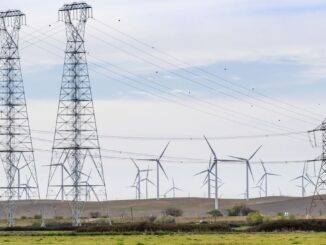
US natural gas working stocks rose by 60 Bcf during the week ended July 1, a well-below-expectations build that fueled a recovery in natural gas futures.
The net injection brought Lower-48 storage inventories up to 2.311 Tcf for the week ended July 1, the US Energy Information Administration reported July 7.
Analysts S&P Global Commodity Insights surveyed July 5 had called for a 73 Bcf build. While responses had ranged from 50 Bcf to 82 Bcf, most analysts surveyed had predicted an above-average build.
The weekly net injection aligned perfectly with the five-year average build of 60 Bcf but was more than double the 25 Bcf injection reported during the corresponding week in 2021, according to EIA data. As a result, stocks were 322 Bcf, or 12.2%, less than the five-year average of 2.588 Tcf, and 261 Bcf, or 10.1%, less than the year-ago level of 2.572 Tcf.
Futures rally
The lower-than-expected build helped accelerate a fledgling recovery in US natural gas futures. Thirty minutes before the 10:30 am ET storage report release, the NYMEX Henry Hub August contract was trading 30 cents higher than its previous day’s settlement at $5.81/MMBtu. In the first 15 minutes of trading after the report, the August contract surged another 30 cents to $6.11/MMBtu.
By mid-session, Henry Hub August was trading at $6.23/MMBtu, CME Group data showed.
Trading gains stretched across the forward curve July 7, with the 2022-23 winter strip (November-March 2022) averaging 61 cents higher at $6.20/MMBtu by 12:30 pm ET.
US natural gas futures have tested the low side in recent trading, with the August contract settling below $6/MMBtu for the last four sessions. Prior to this dip, the prompt-month contract hadn’t settled below $6/MMBtu since March.
Supply vs demand
Robust gas-fired power demand to cope with summer weather was likely a main driver for the lower-than-expected build. Power burn averaged 41.6 Bcf/d for the week ended July 1, up 1.9 Bcf/d, or 5%, from the previous week, S&P Global Commodity Insights data shows.
Higher power burn in the PJM service area accounted for the largest week-on-week increase, according to S&P Global modeling, with daily gas generation averaging 1 Bcf/d, or 23%, higher for the week ended July 1. The New England Independent System Operator and New York ISO also saw large increases in gas generation, with ISO-NE power burn jumping 438 MMcf/d, or 44.6%, and NYISO gas-fired power demand surging 528 MMcf/d, or 56.8%.
Gas in all three service territories provided the bulk of additional generation week on week, reflecting the fuel’s growing role as the swing generation provider in the eastern half of the country after a flurry of coal generation and nuclear retirements.
Outlook
A forecast by S&P Global’s supply and demand model calls for a much lower build of 41 Bcf for the week ending July 8.
Gas-fired power demand has continued to come in strong during the week in progress, amid a heat wave in Texas and the Southeast. S&P Global data shows that gas-fired demand has risen around 500 MMcf/d week on week, to average 42.1 Bcf/d for July 2-7.
US LNG feedgas demand has also shown signs of growth, led by Calcasieu Pass LNG. The Gulf Coast’s newest liquefaction facility saw its feedgas demand reach a fresh high of 1.51 Bcf July 7. Total LNG feedgas demand has come in around 400 MMcf/d stronger July 2-7 than June 25-July 1.
Source: Spglobal.com



